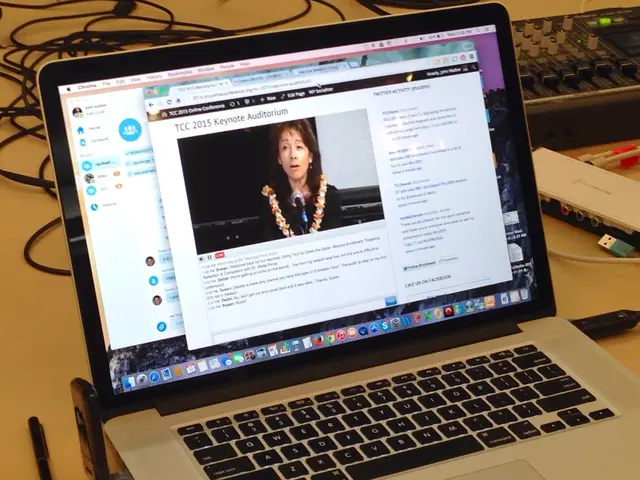Preventing Autistic Mood Outbursts: Essential Strategies for Caregivers
Managing Autistic Meltdowns: A Comprehensive Guide for Prevention and Coping
Autistic meltdowns can be overwhelming and distressing experiences for individuals on the spectrum. However, understanding personal triggers and employing effective coping strategies can help reduce their frequency and intensity. This guide offers practical advice to help those with autism – and those who care for them – navigate these challenging moments.
Recognizing Early Warning Signs
The key to avoiding a full-blown meltdown lies in early detection, when the "rumble" stage is still manageable. This section will outline common early warning signs, helping you recognize the onset of distress before it escalates.
- Agitation or heightened anxiety: Fidgeting, pacing, or feeling edgy are some signs that you might be on the brink of a meltdown.
- Difficulty communicating: Words might stick in your throat, stutter, or you might become unusually quiet as overwhelm sets in.
- Sensory hypersensitivity: A sudden increase in sensitivity to sights, sounds, or touch can indicate an approach to a meltdown.
- Irritability or frustration: A quick rise in anger or tears in response to minor occurrences may be an early warning sign.
- Withdrawal or shutdown: Pulling away from people or activities, wanting solitude, or lacking response to others can signify an incoming meltdown.
- Increased stimming or repetitive behavior: Engaging in more intense or frequent stimming (e.g., rocking, hand-flapping, repeating phrases) can be a coping mechanism when the system is overloaded.
It's important to note that not every individual with autism will exhibit all these signs, and that's okay. Understanding your unique triggers and early warning signs is essential to proactively managing meltdowns.
Identifying Personal Triggers and Planning Ahead
Awareness of personal triggers is just as important as recognizing early warning signs. Most meltdowns are triggered by one or more of the following factors:
- Sensory overload: Loud noises, crowded environments, bright lights, uncomfortable textures, or strong smells can all lead to a meltdown.
- Unexpected changes or disruptions: Sudden schedule changes, canceled plans, or situations not going as expected can spike anxiety.
- High stress or exhaustion: A buildup of long workdays, school pressures, or cumulative small stresses can eventually cause a meltdown.
- Communication or social pressures: Being forced to socialize when overwhelmed, misunderstandings, or difficulty expressing needs can increase the risk of a meltdown.
- Unmet needs: Hunger, thirst, pain, or sleep deprivation can lower the threshold for tolerating other frustrations, potentially leading to a meltdown.
Take some time to reflect on past instances when you felt a meltdown approaching. Do you notice any patterns or common factors? Consider keeping a meltdown diary to identify triggers and make plans to manage those situations more effectively.
Strategies to Prevent a Meltdown and Cope with Them Compassionately
Once you've identified the early warning signs or find yourself in a triggering situation, it's essential to take action to de-escalate the situation. Here are some practical strategies for autistic individuals (and their caregivers) to avoid or reduce a meltdown:
- Remove or reduce the trigger: If possible, step away from the overwhelming stimulus or remove it from your environment.
- Find a safe, calming space: Seek out a quiet spot with minimal sensory input, such as a dim bedroom, parked car, or secluded corner.
- Use a calming sensory or stimming activity: Engage your senses in a soothing way, such as playing calming music, hugging a pillow, using a swing or rocking chair, or playing a repetitive game or video.
- Ground yourself with techniques for anxiety: Use grounding exercises like the "5-4-3-2-1" sensory countdown or 7-11 breathing to bring yourself back to the present moment.
- Communicate (or use a signal): If around people you trust while feeling a potential meltdown approaching, express your needs or use a pre-established code word or hand signal.
- Leverage supportive allies: Have a friend or family member step in to help remove you from the situation or reduce stimuli.
Quick Tips: Your Personalized Sensory Toolkit
Put together a "toolkit" of items and strategies that you can turn to when nearing overload. This personalized first-aid kit can help regulate sensory input and manage emotional upsets. Some ideas for what to include in your kit:
- Noise-cancelling headphones or earplugs
- Sunglasses or a hat
- Stim toys or comfort objects
- Calming scents or tastes (e.g., Peppermint or lavender oil, chewing gum, sour candy)
- Weighted or soothing items (e.g., a weighted blanket or lap pad)
- "Explanation" card or note
By implementing these strategies and assembling a personalized sensory toolkit, individuals with autism and their families can better manage meltdowns and improve overall well-being.
References:[1] Autism Speaks. (2022). Coping with Meltdowns and Shutdowns. https://www.autismspeaks.org/what-autism/about-autism/behavior-regulation/meltdowns-shutdowns[2] Understood. (n.d.). Meltdowns & Shutdowns: Dealing with Sensory Overload. https://www.understood.org/en/learning-attention-issues/social-emotional-executive-functioning/managing-meltdowns-and-shutdowns/dealing-with-sensory-overload[3] Autism New Jersey. (2022). Sensory Sensitivity and Autism. https://www.autismnj.org/sensory-sensitivity-and-autism/[4] Children and Adults with Autism (CAA). (2022). Applied Behavior Analysis (ABA) Therapy. https://www.childrenandadultswithautism.org/our-services/applied-behavior-analysis-aba-therapy/
- Recognizing early signs of stress and anxiety in the mind, such as agitation, difficulty communicating, sensory hypersensitivity, irritability, withdrawal, and increased stimming, can help prevent autistic meltdowns.
- Understanding personal triggers, like sensory overload, unexpected changes, high stress, communication or social pressures, and unmet needs, can aid in proactively managing autistic meltdowns.3.Effective coping strategies for managing autistic meltdowns include removing or reducing triggers, finding a calming space, using calming sensory activities, grounding techniques for anxiety, communicating needs, and leveraging supportive allies.
- A personalized sensory toolkit, containing items like noise-cancelling headphones, comfort objects, calming scents, weighted items, and explanation cards, can help regulate sensory input and manage emotional upsets during a meltdown.
- Implementing these strategies and assembling a personalized sensory toolkit can lead to better mental health, improved communication, and overall well-being in individuals with autism and their families.
- Resources such as Autism Speaks, Understood, Autism New Jersey, and Children and Adults with Autism offer valuable information and support for managing autistic meltdowns.
- By being aware of early signs, understanding personal triggers, and employing effective coping strategies, society can create a healthier and more inclusive environment for individuals with autism, promoting continued advancements in the fields of psychology, science, and health-and-wellness related to mental health.





